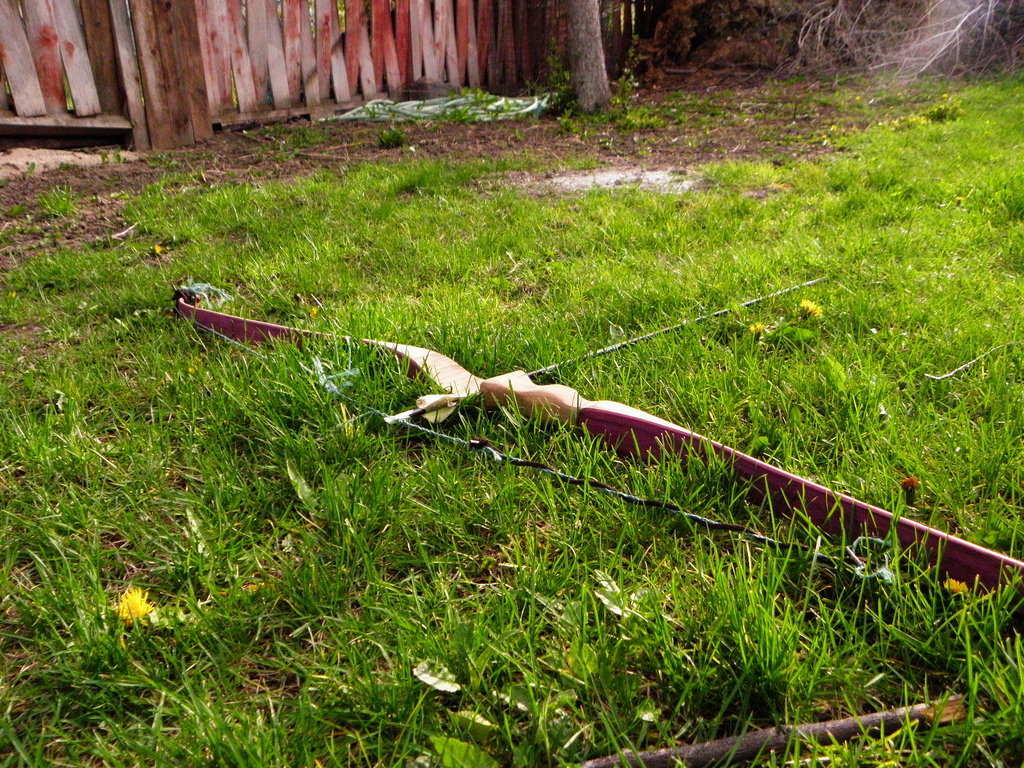Whether for hunting or defense, a bow is a great tool to have with you in any survival situation. But a bow is a little big to put in your pocket as part of your everyday carry. Being able to make one from materials available to you in the wilderness will insure that you always have a means of hunting and defending yourself.
Material
The first and most important set in crafting a survival bow in the wilderness is selecting the proper material for your bow. Search for a young, green, hardwood sapling. You will need a piece at least 6 feet long, preferably branch free, and between 1 to 2 inches think. You will also need cordage to use as your bowstring, paracord will work well, you need a piece 6 to 8 feet long.
Preparing Bow Stave
After felling the tree, trim it down so that you have a piece with both ends close in diameter and about chin height when you stand it up. To get the stave to flex, start carving away wood from the belly side to weaken it. Be very careful not to remove any material from the side of the stave that will face away from you (towards your target), this will drastically reduce its strength and could cause it to break. To start off you can use your knife to chop at the bow, but once it begins to flex easily, switch to more detail oriented carving technique to reduce the risk of damaging the bow my removing too much or making a gash in the wood. Next, taper both ends down, and cut notches in the sides to help hold the bowstring. The notches should be angled slightly to the center of the bow.
Stringing the Bow
While you are not done yet, the next step requires that you have your bow strung. Wrap the string around one end, utilizing the notches, and tie a tight knot. Then place that end of the bow on the ground against the outside of your weak foot, then step through the bow with your strong leg (so that your leg is between the bow and the string), then use your strong leg’s outer thigh to hold the bow in place while you bend it, while the bow is under tension tie the other end of the string to the bow.
Check for Symmetry
You will need to make sure that the bow is as symmetrical as you can make it. To do so, string the bow, and place it on the ground with the string facing up. Step on the center of the bow with your foot under the string, now pull up on the string while paying attention to the amount of flex and tension on either side of your foot. If it is not symmetrical yet, unstring the bow and continue to remove material carefully from the side that did not flex enough or had too much tension.
Adjust Tension
The last step is to adjust the string tension. A good guide to know if your bowstring is tight enough is to place your fist in the center of your bow and raise your thumb up. Your bowstring should come to the tip of your thumb.
As with all skills we discuss, you don’t want to be putting them to the test for the first time when your life depends on it. Practice some with a bow from time to time so that you have a general idea of how one works. We will cover how to make arrows soon.
If you liked this, you might also enjoy…


